How to Protect Your Banking Information Online
In today's digital age, protecting your banking information online is more important than ever. With the rapid advancement of technology and the increasing reliance on online banking, it's crucial to understand the potential risks and how to safeguard your sensitive information. Imagine your financial data as a treasure chest; you wouldn't leave it unlocked for anyone to rummage through, right? Similarly, you need to take proactive steps to ensure that your digital banking experience is secure and your information remains confidential. In this article, we will explore essential strategies and tips for safeguarding your banking information, ensuring your financial data remains secure from potential threats and breaches.
Identifying the various risks associated with online banking is crucial. The digital landscape is fraught with dangers that can compromise your sensitive financial information. Common threats include phishing, where attackers impersonate legitimate institutions to steal your credentials; malware, which can infect your devices and capture your data without your knowledge; and data breaches, where hackers gain unauthorized access to your bank's database, potentially exposing your personal information. By understanding these risks, you can better prepare yourself to combat them.
Creating strong, unique passwords is a fundamental step in protecting your banking information. Think of your password as the key to your treasure chest; a weak key can easily be picked. Best practices for password creation include using a mix of upper and lower case letters, numbers, and special characters. Avoid using easily guessable information such as birthdays or names. Additionally, consider using a password manager to help you generate and store complex passwords securely. This way, you won’t have to remember every password, and it significantly reduces the risk of using the same password across multiple sites.
Implementing two-factor authentication (2FA) adds an extra layer of security to your online banking. It’s like having a second lock on your treasure chest. Even if someone manages to steal your password, they still need the second piece of information to access your account. This section explains how 2FA works and why it is essential for protecting your accounts from unauthorized access. Most banks offer 2FA options, typically involving something you know (your password) and something you have (like a code sent to your phone).
There are several methods for two-factor authentication, including SMS codes and authentication apps. Each method has its pros and cons:
| Method | Pros | Cons |
|---|---|---|
| SMS Codes | Easy to use; no extra app needed | Vulnerable to SIM swapping attacks |
| Authentication Apps | More secure; works offline | Requires initial setup; may be confusing for some |
Choosing the method that best fits your needs is essential for maximizing your online banking security.
Setting up two-factor authentication can vary by bank. Generally, you can find the option in your account settings. Follow these simple steps:
- Log in to your online banking account.
- Navigate to the security settings.
- Select the option for two-factor authentication.
- Choose your preferred method (SMS or authentication app).
- Follow the prompts to complete the setup.
Once set up, you’ll receive a code each time you log in, adding an extra layer of protection.
Phishing scams are a prevalent threat to online banking security. They can come in the form of emails, texts, or even phone calls that appear legitimate. To protect yourself, always check the sender's email address, look for spelling errors, and never click on suspicious links. If something feels off, trust your instincts and verify directly with your bank.
Ensuring your devices are secure is vital for protecting your banking information. This includes keeping your computers and smartphones safe from malware and unauthorized access. Regularly check for updates and install reputable antivirus software to shield your devices from threats. Think of your device as your personal vault; if it's compromised, so is your financial information.
Keeping your software up to date is essential for security. Regular updates for your operating system and applications patch vulnerabilities that hackers could exploit. Set your devices to update automatically, or make it a habit to check for updates weekly.
Antivirus software can help protect your devices from malicious attacks. It acts like a security guard for your digital vault, monitoring for suspicious activity and blocking potential threats. Choose reputable antivirus programs and ensure they are always running to maximize your protection.
Regularly monitoring your banking accounts can help detect suspicious activity early. Make it a routine to check your transactions at least once a week. Look for unfamiliar charges or withdrawals; if you spot anything unusual, report it to your bank immediately.
Setting up transaction alerts can provide real-time updates on your account activity. Most banks allow you to configure alerts for specific transactions, such as large withdrawals or purchases over a certain amount. This way, you can stay informed and act quickly if something seems off.
If you suspect fraudulent activity, knowing how to respond is crucial. Immediately contact your bank to report the issue and freeze your account if necessary. Change your passwords and enable two-factor authentication to enhance security. The quicker you act, the better you can mitigate potential damage.
Staying informed about cybersecurity trends and threats is vital for protecting your banking information. The digital landscape is constantly evolving, and so are the tactics used by cybercriminals. Make it a habit to read articles, follow cybersecurity experts on social media, and participate in discussions to enhance your understanding.
Participating in online courses and webinars can enhance your understanding of cybersecurity. Many organizations offer free or low-cost resources that cover various topics, from basic security practices to advanced threat detection. Investing time in learning can pay off significantly in safeguarding your banking information.
Cyber threats are constantly evolving. Subscribe to cybersecurity newsletters or blogs to stay updated on the latest threats and how to adapt your security measures accordingly. Knowledge is power, and staying informed can help you stay one step ahead of cybercriminals.
In conclusion, protecting your banking information online requires vigilance and proactive measures. By understanding the risks, implementing strong password practices, utilizing two-factor authentication, and regularly monitoring your accounts, you can significantly enhance your online banking security. Remember, your financial data is valuable; treat it with the care it deserves. Take the time to implement these strategies and stay informed about the ever-changing landscape of cybersecurity.
Q1: What should I do if I think my banking information has been compromised?
A1: If you suspect that your banking information has been compromised, immediately contact your bank, change your passwords, and enable two-factor authentication. Monitor your accounts closely for any unauthorized transactions.
Q2: How often should I change my online banking password?
A2: It's recommended to change your online banking password every 3 to 6 months. Additionally, change it immediately if you suspect any suspicious activity.
Q3: Is it safe to use public Wi-Fi for online banking?
A3: Using public Wi-Fi for online banking is risky. If you must use it, ensure you’re connected to a virtual private network (VPN) to encrypt your data and protect your information from potential hackers.

Understanding Online Banking Risks
In today's digital world, online banking has become an essential part of our financial lives. However, with the convenience of managing our finances from anywhere comes a plethora of risks that every user should be aware of. Understanding these risks is the first step in safeguarding your sensitive banking information. One of the most common threats is phishing, where cybercriminals attempt to trick you into revealing personal information by masquerading as legitimate institutions. Imagine receiving an email that appears to be from your bank, asking you to verify your account details. If you fall for this trap, you could unwittingly hand over your credentials to malicious actors.
Another significant threat is malware, which is software designed to infiltrate your devices without your consent. This can happen through infected downloads or visiting compromised websites. Once malware is installed, it can capture keystrokes, access sensitive files, and even take control of your device. It's like leaving your front door wide open for a burglar to stroll in and take whatever they want. To combat these threats, it’s crucial to maintain strong security practices.
Moreover, data breaches are an ever-present risk. Large-scale breaches can expose millions of accounts at once, and if your bank is compromised, your personal information could be at risk. Think of it as a massive vault being broken into; once the lock is picked, all the valuables inside are vulnerable. Being aware of these risks allows you to take proactive measures to protect your banking information.
Here’s a quick overview of the most common online banking risks:
- Phishing: Deceptive attempts to acquire sensitive information.
- Malware: Malicious software designed to damage or gain unauthorized access to devices.
- Data Breaches: Incidents where sensitive information is accessed without authorization.
By understanding these risks, you can better prepare yourself to navigate the online banking landscape securely. Remember, the goal is to stay one step ahead of cybercriminals, ensuring that your financial data remains safe and sound.

Strong Password Practices
Creating strong, unique passwords is one of the most fundamental steps in safeguarding your banking information online. Think of your password as the key to your financial vault; if it's weak or easily guessable, you're essentially leaving your door wide open for intruders. So, how do you ensure that your passwords are robust enough to withstand potential attacks? Let’s break it down.
First off, a strong password should be at least 12 characters long and include a mix of uppercase letters, lowercase letters, numbers, and special characters. The more complex your password, the harder it is for someone to crack it. For example, instead of using a simple password like "Password123", consider something like "P@ssw0rd!2023". This not only makes it more challenging for hackers but also adds a layer of unpredictability.
Another essential practice is to avoid using the same password across multiple sites. Imagine using the same key for your house, car, and safe; if someone gets hold of that key, they can access everything you own. Similarly, if a hacker gains access to one of your accounts, they could potentially unlock all your other accounts using the same password. To manage different passwords, consider using a password manager. These tools can generate and store complex passwords so you don’t have to remember them all.
Additionally, it’s crucial to change your passwords regularly. Think of it as changing the locks on your doors periodically to enhance security. Set a reminder to update your passwords every three to six months. If you hear about a data breach involving a service you use, change your password for that service immediately.
Here are some best practices to keep in mind when creating and managing your passwords:
- Use a mix of characters: Include uppercase, lowercase, numbers, and symbols.
- Avoid personal information: Don’t use easily accessible information like your name, birthdate, or address.
- Consider passphrases: Create a memorable phrase and modify it with numbers and symbols, e.g., "MyDogIs#1!"
Finally, be cautious about where you enter your passwords. Always ensure that you are on a secure website (look for "https://" in the URL) before logging in. If you are using public Wi-Fi, consider using a VPN to encrypt your connection. This adds an additional layer of security, making it much harder for anyone to intercept your data.
In summary, strong password practices are your first line of defense against online threats. By creating complex passwords, using unique credentials for different sites, and employing a password manager, you can significantly reduce your risk of falling victim to cybercrime. Now that you know how to strengthen your passwords, let’s delve into the next crucial aspect of online banking security: Two-Factor Authentication.
1. How often should I change my passwords?
It’s recommended to change your passwords every three to six months, or immediately if you suspect a breach.
2. What is a password manager?
A password manager is a tool that helps you create, store, and manage your passwords securely. It can generate strong passwords and fill them in automatically on websites.
3. Are longer passwords better?
Yes! Longer passwords are generally more secure. Aim for at least 12 characters, and include a mix of letters, numbers, and symbols.
4. Is it safe to use public Wi-Fi for online banking?
It's best to avoid online banking on public Wi-Fi unless you are using a VPN, which encrypts your connection and helps protect your data.
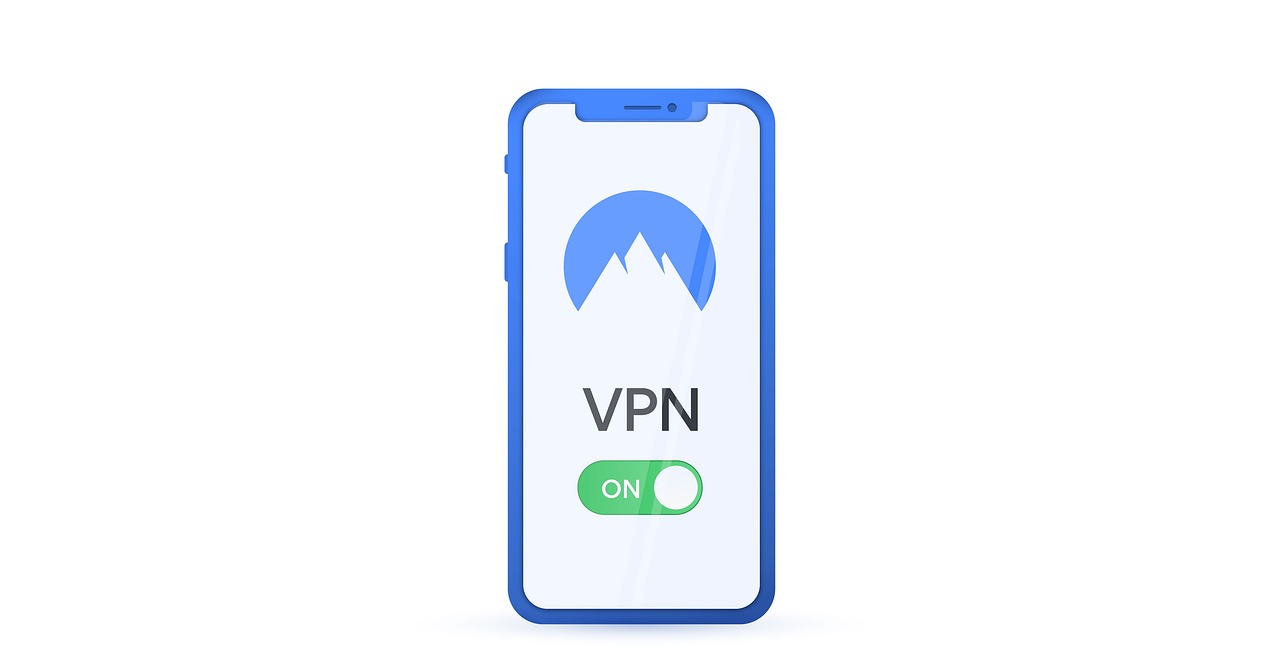
Two-Factor Authentication
In today's digital age, protecting your banking information is more critical than ever, and one of the most effective ways to do this is through Two-Factor Authentication (2FA). This security measure adds an extra layer of protection by requiring not only your password but also a second form of verification. Think of it as a double lock on your front door—just having a key isn't enough; you need that extra security to keep intruders out.
So, how does 2FA work? When you attempt to log into your online banking account, after entering your password, you will be prompted to provide a second piece of information. This could be a code sent to your mobile phone, a fingerprint scan, or even a code generated by an authentication app. By requiring something you know (your password) and something you have (your phone or authentication device), 2FA significantly reduces the risk of unauthorized access.
Why is 2FA essential? Well, consider this: even if a hacker manages to steal your password through phishing or data breaches, they would still need that second factor to access your account. This added layer of security can be the difference between safeguarding your financial assets and becoming a victim of identity theft. In fact, many banks and financial institutions now mandate 2FA for their online services, recognizing its importance in maintaining security.
Here are some common methods of Two-Factor Authentication:
- SMS Codes: A one-time code sent to your mobile phone via text message.
- Authentication Apps: Apps like Google Authenticator or Authy generate time-sensitive codes that you enter after your password.
- Biometric Authentication: Using your fingerprint or facial recognition for verification.
While 2FA significantly enhances your online banking security, it's essential to choose the right method for your needs. Some methods, like SMS codes, can be intercepted, while others, like authentication apps, are generally more secure. Therefore, it's crucial to evaluate the pros and cons of each option and select the one that best suits your security requirements.
Setting up 2FA is typically straightforward. Most banks provide clear instructions on how to enable this feature within your account settings. If you're uncertain about the process, don't hesitate to reach out to your bank's customer support for assistance. Remember, taking this extra step can greatly enhance your online security and give you peace of mind when managing your finances.
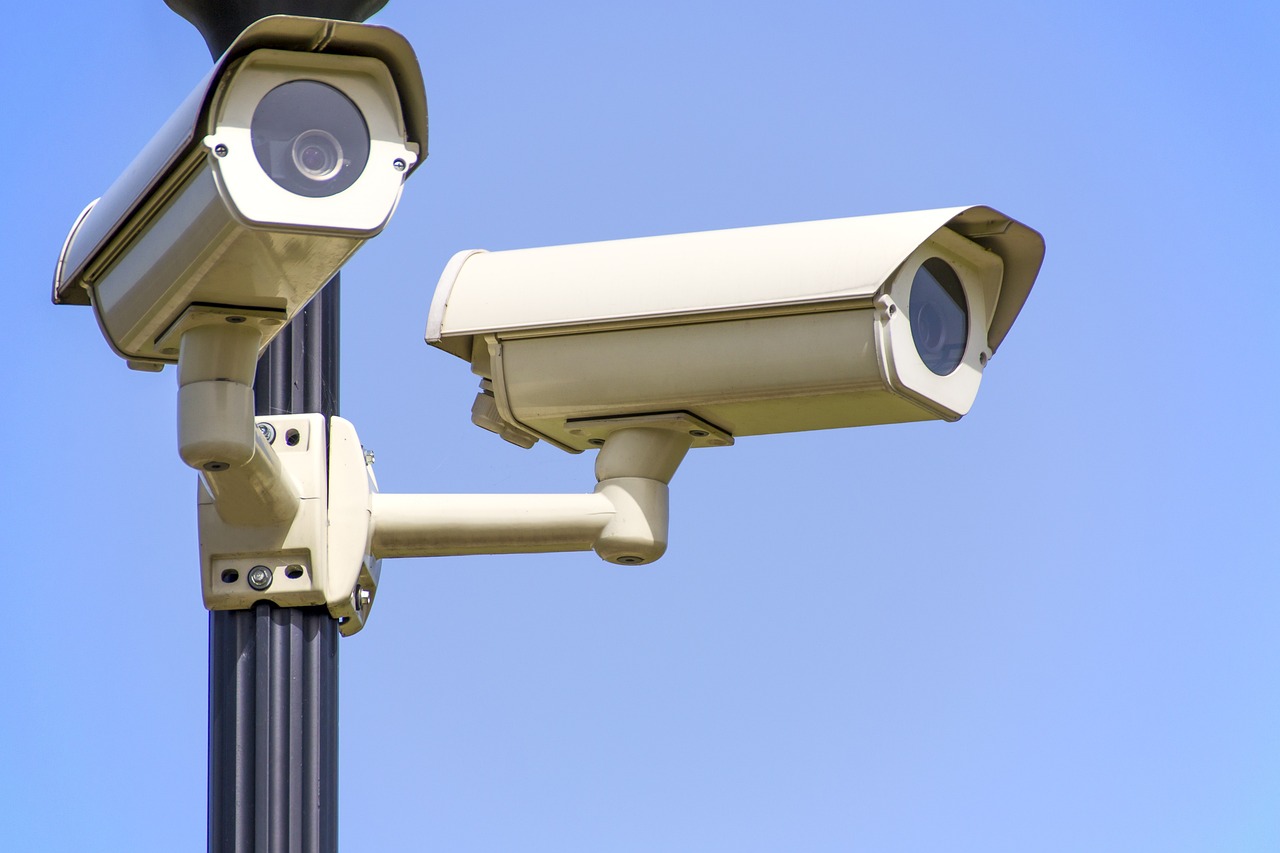
Choosing the Right 2FA Method
When it comes to securing your online banking, two-factor authentication (2FA) is a game-changer. But with multiple methods available, how do you choose the right one? The choice can feel overwhelming, but understanding the pros and cons of each option can help you make an informed decision. Let’s break it down.
One of the most common methods of 2FA is the use of SMS codes. This method involves receiving a text message with a code that you must enter after your password. While this is convenient, it does have its vulnerabilities. For instance, if someone gains access to your phone or if your phone number is compromised through a SIM swap attack, your security can be at risk. So, while SMS codes are easy to use, they might not be the most secure option.
On the other hand, authentication apps like Google Authenticator or Authy provide a more robust layer of security. These apps generate time-sensitive codes that are only valid for a short period. This means that even if someone manages to get a hold of your password, they would still need access to your app to log in. This method is generally considered more secure than SMS codes, but it does require you to remember to have your device handy whenever you log in.
Another option to consider is hardware tokens. These are physical devices that generate codes or allow you to authenticate with a simple button press. They are incredibly secure because they are not connected to the internet, making them resistant to phishing attacks. However, they can be a bit cumbersome to carry around, and if you lose it, you might find yourself locked out of your accounts.
Here’s a quick comparison table to help you visualize the differences:
| 2FA Method | Security Level | Convenience | Risk Factors |
|---|---|---|---|
| SMS Codes | Medium | High | Vulnerable to SIM swap attacks |
| Authentication Apps | High | Medium | Requires access to device |
| Hardware Tokens | Very High | Low | Risk of loss |
Ultimately, the right 2FA method for you depends on your personal needs and how much security you want versus how much convenience you need. If you frequently access your banking information, an authentication app may strike the perfect balance between security and usability. However, if you're looking for the highest level of protection and don’t mind the extra step of carrying a hardware token, that might be your best bet. Remember, the goal is to keep your financial information safe while making it easy enough for you to access when you need it!
- What is two-factor authentication? - It's an extra layer of security used to ensure that people trying to gain access to an online account are who they say they are.
- Is two-factor authentication necessary? - While it's not mandatory, it is highly recommended to protect your sensitive information.
- Can I use more than one 2FA method? - Yes! Some platforms allow you to enable multiple methods for added security.
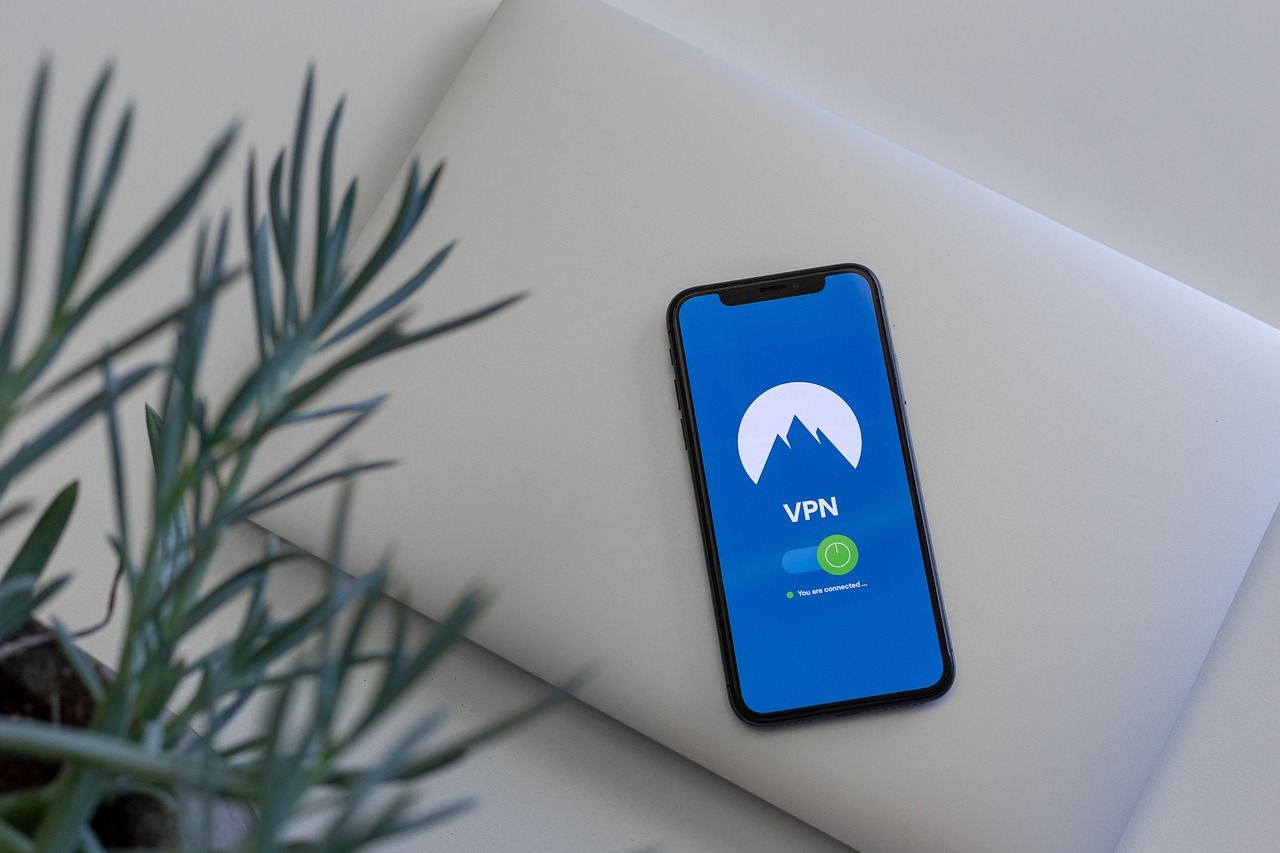
Setting Up 2FA
Setting up two-factor authentication (2FA) is a crucial step in fortifying your online banking security. While the process may vary slightly depending on your bank, the general principles remain the same. First, you’ll need to log into your online banking account. Once logged in, navigate to the security settings section, which is often found under account settings or privacy options. Here, you should see an option for two-factor authentication. Click on it to start the setup process.
Next, you’ll typically be prompted to choose your preferred method of receiving the second factor. Common options include:
- SMS codes: A text message sent to your mobile phone containing a one-time code.
- Authentication apps: Applications like Google Authenticator or Authy that generate time-sensitive codes.
- Email codes: A code sent to your registered email address.
After selecting your preferred method, follow the on-screen instructions. This may involve verifying your phone number or linking your authentication app. For SMS codes, you’ll receive a text message with a code that you must enter to complete the setup. If you choose an authentication app, you’ll scan a QR code that links the app to your account.
Once you’ve successfully set up 2FA, it’s wise to test it out. Log out of your banking account and log back in to ensure that the second factor is required. This not only confirms that your 2FA is functioning correctly but also gives you a feel for how it works. Remember, the extra step of entering a code might seem like a hassle, but it’s a small price to pay for enhanced security.
In case you ever lose access to your 2FA method—like losing your phone—most banks provide backup codes during the setup process. These codes can be used to regain access to your account. It’s essential to store these codes in a safe place, separate from your banking information, to ensure you can always recover your account if needed.
By taking the time to set up two-factor authentication, you’re significantly improving your online banking security. It’s one of the simplest yet most effective ways to protect your financial information from unauthorized access. So, don’t wait—get started today!
Q: What if I don't have a smartphone for 2FA?
A: Many banks offer alternative methods like SMS codes or email verification. You can choose the method that works best for you.
Q: Can I use multiple 2FA methods?
A: Yes, some banks allow you to set up multiple 2FA methods for added flexibility and security.
Q: What should I do if I lose my phone?
A: Use the backup codes provided during the 2FA setup process to regain access to your account. If you don’t have the codes, contact your bank for assistance.
Q: Is 2FA necessary if I have a strong password?
A: Yes, while strong passwords are essential, they can still be compromised. 2FA adds an extra layer of security that significantly reduces the risk of unauthorized access.
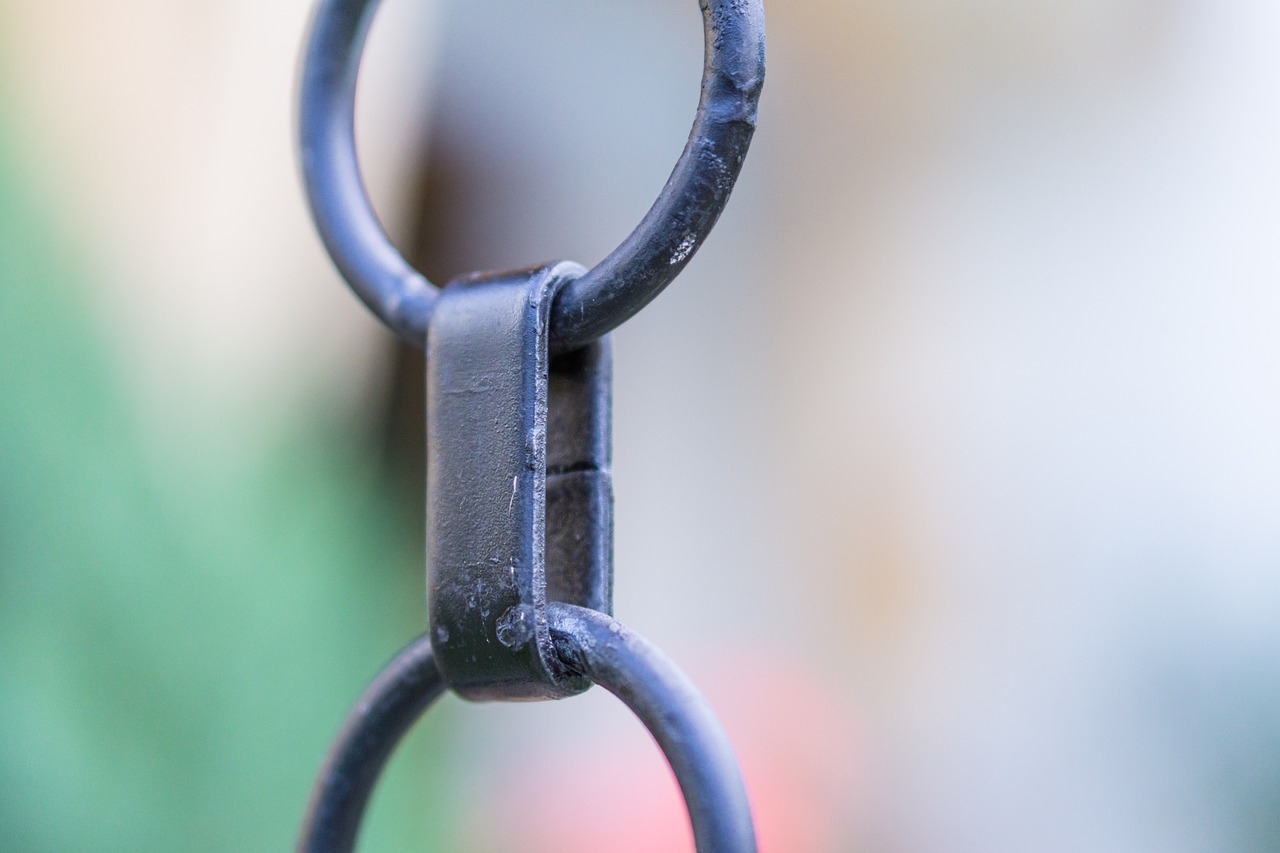
Recognizing Phishing Scams
In today’s digital age, phishing scams have become a pervasive threat, targeting unsuspecting individuals and attempting to steal sensitive information, including banking details. These scams can take various forms, but they all share a common goal: to trick you into revealing personal information. Recognizing the signs of a phishing attempt is crucial for protecting yourself and your financial information.
Phishing scams often masquerade as legitimate communications from trusted organizations, such as your bank or well-known online services. They might come in the form of emails, text messages, or even phone calls. Here are a few red flags to watch out for:
- Generic Greetings: Phishing emails often begin with vague salutations like "Dear Customer" instead of using your name.
- Urgent Language: Many phishing attempts create a sense of urgency, prompting you to act quickly without thinking. Phrases like "Your account will be suspended!" are common.
- Suspicious Links: Hover over any links before clicking them. If the URL looks strange or doesn’t match the official website, it’s likely a scam.
- Unusual Requests: Legitimate organizations will never ask for sensitive information like passwords or social security numbers via email.
Furthermore, phishing scams can also occur through social media platforms or messaging apps. Be cautious of unsolicited messages that prompt you to click on links or provide personal information. Always verify the identity of the sender, especially if the message seems out of the ordinary.
Another effective way to recognize phishing attempts is to look for poor grammar and spelling mistakes. Many phishing emails are poorly written, which can be a telltale sign that the message is not from a reputable source. Additionally, be wary of attachments in emails from unknown senders, as these can contain malware designed to compromise your device.
To further protect yourself, consider the following strategies:
- Verify the Source: If you receive a suspicious email, contact the company directly using a known phone number or their official website.
- Use Security Software: Keeping your antivirus software up to date can help detect and block phishing attempts.
- Educate Yourself: Stay informed about the latest phishing tactics and scams to better recognize potential threats.
In summary, recognizing phishing scams is essential for safeguarding your banking information. By being vigilant and aware of the common signs of phishing attempts, you can significantly reduce your risk of falling victim to these deceptive tactics. Remember, when in doubt, it's always best to double-check and verify before taking any action that could compromise your financial security.
Q: What should I do if I think I've received a phishing email?
A: Do not click on any links or provide any information. Report the email to your email provider and delete it.
Q: Can phishing scams happen over the phone?
A: Yes, phishing scams can occur over the phone, often referred to as "vishing." Always verify the identity of the caller before providing any information.
Q: How can I protect myself from phishing attacks?
A: Stay informed about phishing tactics, use security software, and never provide sensitive information through unsolicited messages.

Securing Your Devices
In today's digital age, securing your devices is not just a good practice; it's a necessity. With cyber threats lurking around every corner, your smartphone, tablet, and computer can become gateways for unauthorized access to your banking information. Imagine your device as a fortress; if the walls are weak, intruders will find a way in. Therefore, it’s crucial to implement robust security measures to protect your financial data.
First and foremost, ensure that your devices are equipped with the latest security updates. Just like a knight sharpening his sword before battle, keeping your operating system and applications updated fortifies your defenses against vulnerabilities that hackers might exploit. Regular updates often include patches for security flaws, making it essential to enable automatic updates if possible. Not only does this save you time, but it also ensures that you are always protected against the latest threats.
Next, consider using reputable antivirus software. This software acts as your personal security guard, monitoring your devices for any malicious activity. With the increasing sophistication of malware, having a reliable antivirus program can significantly reduce the risk of infections that could compromise your banking information. Look for antivirus solutions that offer real-time protection, regular scans, and automatic updates to stay ahead of cybercriminals.
Another important aspect of device security is being cautious about the networks you connect to. Public Wi-Fi networks, while convenient, can be a hotbed for hackers. Connecting to these networks is akin to leaving your front door wide open; anyone can stroll in and take a look around. Whenever possible, use a Virtual Private Network (VPN) to encrypt your internet connection, especially when accessing sensitive information like your bank account. A VPN acts like a secure tunnel, shielding your data from prying eyes.
Additionally, consider implementing biometric security features available on many modern devices. Fingerprint scanners and facial recognition technology add an extra layer of protection, making it more difficult for unauthorized users to access your information. Think of these features as the moat around your castle—while it may not be impossible to breach, it certainly makes it more challenging for intruders.
Finally, be mindful of the applications you install on your devices. Just as you wouldn’t invite strangers into your home, avoid downloading apps from untrusted sources. Always check reviews and ensure that the app is from a reputable developer before installation. Furthermore, regularly review the permissions granted to your apps; sometimes, they might request access to more information than necessary, which can pose a risk to your banking data.
To summarize, securing your devices requires a multi-faceted approach that includes regular updates, antivirus software, cautious network usage, biometric security, and careful app management. By implementing these strategies, you can significantly reduce the risk of falling victim to cyber threats and keep your banking information safe. Remember, in the world of online banking, vigilance is your best defense.
- What are the signs that my device may be compromised? Look for unusual behavior such as slow performance, unexpected pop-ups, or unfamiliar applications. If you notice any of these signs, run a security scan immediately.
- Can I use free antivirus software? While free antivirus solutions can offer basic protection, they may not provide comprehensive security. Consider investing in a reputable paid option for better protection.
- Is it safe to use public Wi-Fi for banking? It’s risky to use public Wi-Fi for banking. If you must, always use a VPN to encrypt your connection.
- How often should I update my software? Regularly check for updates at least once a week, and enable automatic updates whenever possible.
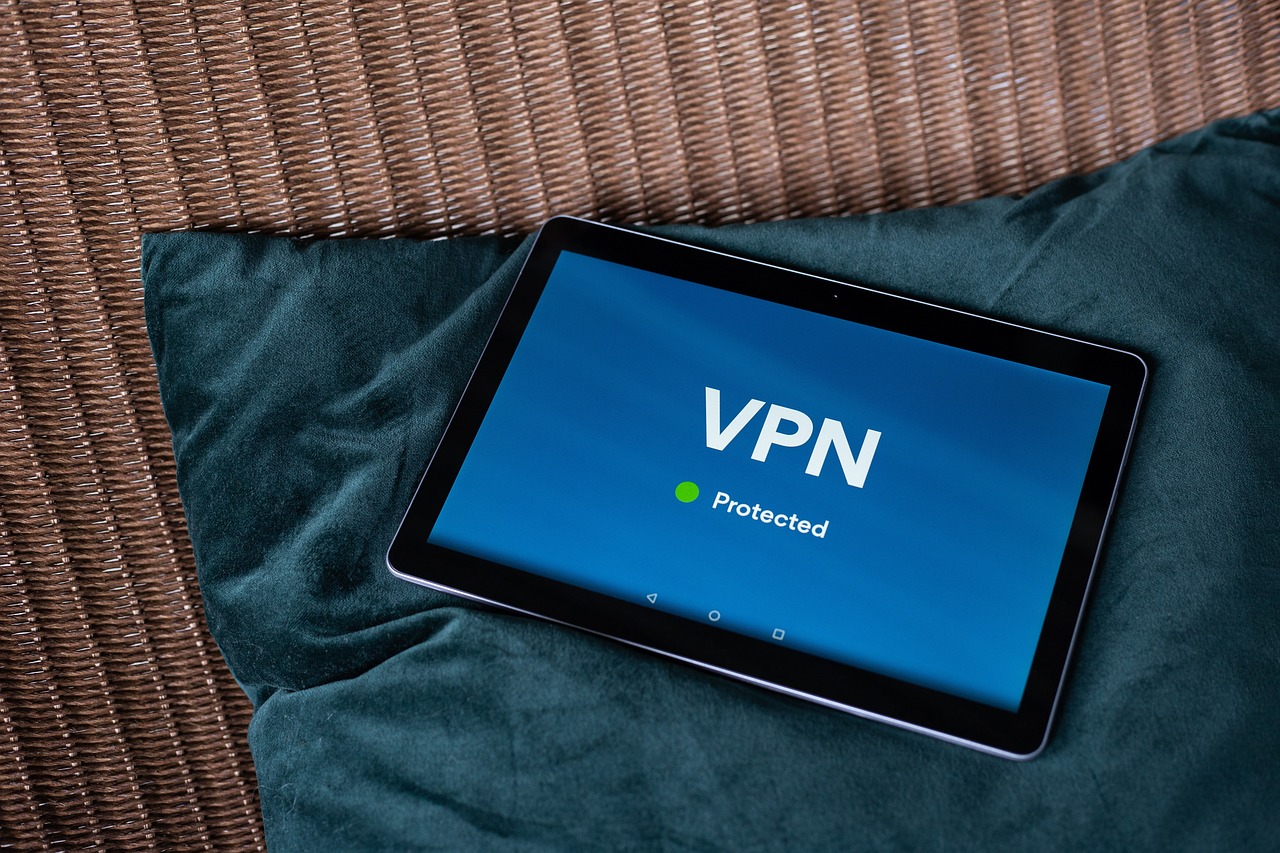
Regular Software Updates
Keeping your software up to date is not just a good habit; it's a critical defense mechanism against cyber threats. Just like how you wouldn’t leave your front door unlocked, allowing anyone to waltz in, you shouldn’t neglect the security of your devices. Software updates often come with patches that address vulnerabilities that hackers could exploit. When you ignore these updates, it’s like leaving an open invitation for cybercriminals to access your sensitive banking information.
Think about it: every time you update your software, you’re essentially reinforcing the walls of your digital fortress. These updates can range from minor tweaks to major overhauls, but their primary goal remains the same—to enhance security and improve functionality. For instance, operating systems like Windows or macOS regularly release updates that include important security fixes. Failing to install these updates can leave your system exposed to malware, spyware, and other malicious threats.
Moreover, applications you use for online banking, shopping, or even social media are also subject to updates. These updates not only fix bugs but also enhance security protocols, making it harder for unauthorized users to gain access. Ignoring these updates can lead to a false sense of security. You might feel safe, but in reality, you are walking on thin ice.
To make it easier for you to stay on top of software updates, consider the following tips:
- Enable Automatic Updates: Most operating systems and applications offer the option to enable automatic updates. This way, you won’t have to remember to check for updates manually.
- Schedule Regular Checks: If you prefer to manage updates yourself, set a specific time each week or month to check for available updates.
- Read Release Notes: Before updating, take a moment to read the release notes. This will help you understand what changes are being made and why they are important.
In conclusion, regular software updates are a simple yet effective way to bolster your online banking security. By keeping your systems and applications updated, you are not only protecting your banking information but also ensuring a smoother and more efficient user experience. Remember, in the world of online security, staying one step ahead is crucial. So, don’t delay—update today!
Q: How often should I update my software?
A: It's best to update your software as soon as updates become available. Most systems will notify you of updates, so enable automatic updates if possible.
Q: What should I do if an update fails?
A: If an update fails, try restarting your device and attempting the update again. If it continues to fail, check the software provider's website for troubleshooting tips.
Q: Are software updates really necessary?
A: Yes, software updates are essential for maintaining security and functionality. They often include critical security patches that protect your device from vulnerabilities.
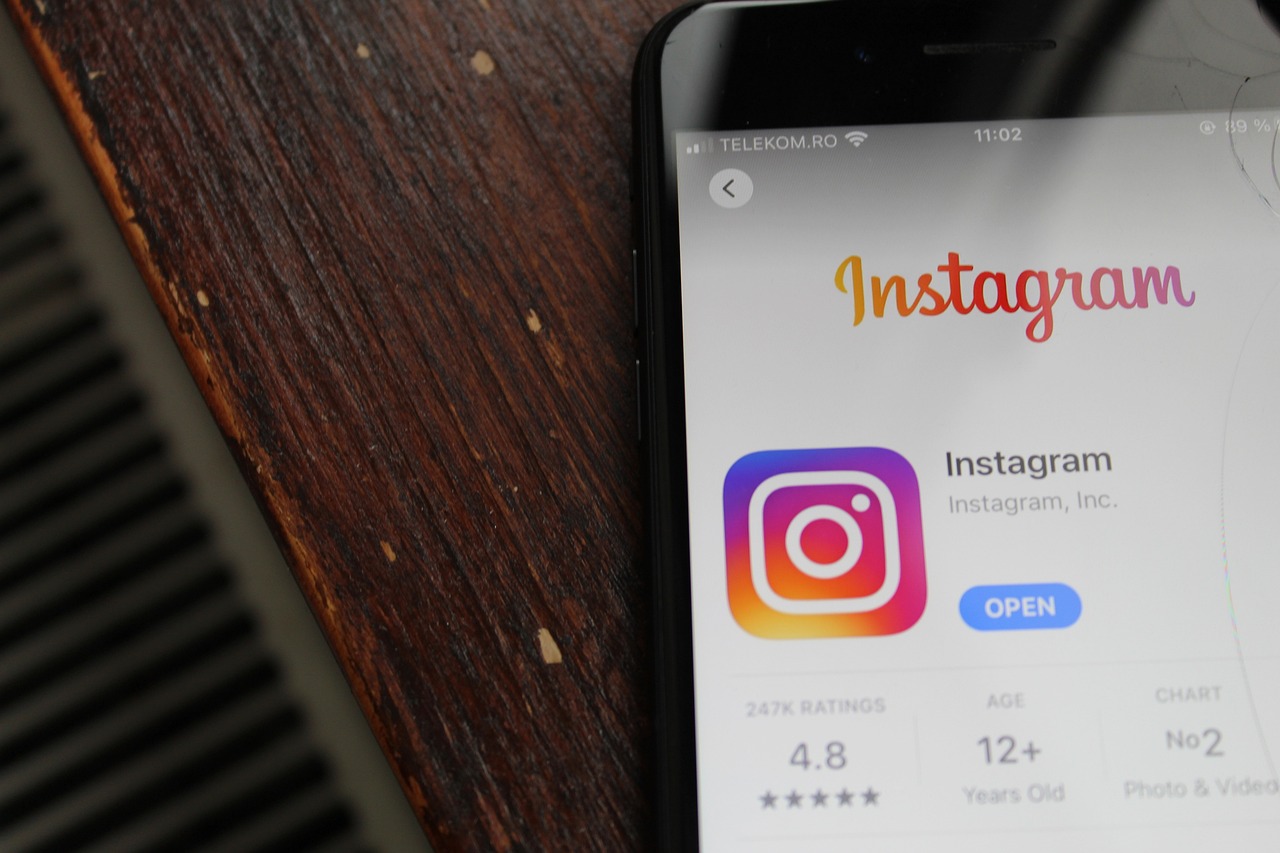
Using Antivirus Software
In the digital age, where our lives are intertwined with technology, using antivirus software is not just a recommendation; it's a necessity. Think of antivirus programs as your personal security guards, patrolling the digital landscape to keep your sensitive information safe from malicious threats. These programs are designed to detect, prevent, and remove malware, ensuring that your banking information remains secure.
One of the key benefits of antivirus software is its ability to provide real-time protection. This means that as soon as a threat is detected, the software springs into action, blocking harmful files before they can do any damage. Imagine walking through a crowded market where pickpockets lurk; having antivirus software is like having a trusted friend by your side, ready to alert you at the first sign of trouble.
Moreover, reputable antivirus solutions offer a range of features that go beyond simple virus detection. Many include:
- Firewall Protection: Acts as a barrier between your computer and potential threats from the internet.
- Web Protection: Blocks harmful websites that may attempt to steal your banking information.
- Email Scanning: Scans incoming emails for malicious attachments or links that could lead to phishing scams.
However, it's important to choose the right antivirus software. Not all programs are created equal, and some may offer better protection than others. Look for software that has a proven track record, consistently high ratings from independent testing labs, and comprehensive features that suit your needs. Additionally, ensure that you keep your antivirus software updated; just like a car needs regular maintenance to run smoothly, your antivirus software needs updates to stay effective against new threats.
In conclusion, using antivirus software is a critical step in protecting your banking information online. By investing in a reputable solution and keeping it updated, you create a robust defense against the ever-evolving landscape of cyber threats. Remember, your financial security is worth the effort!
Q1: How often should I update my antivirus software?
A1: It's recommended to update your antivirus software at least once a week, or enable automatic updates to ensure you always have the latest protection against new threats.
Q2: Can I rely on free antivirus software?
A2: While free antivirus software can provide basic protection, it often lacks the comprehensive features and support that paid versions offer. For more robust protection, consider investing in a reputable paid antivirus solution.
Q3: What should I do if my antivirus software detects a threat?
A3: If your antivirus software detects a threat, follow the prompts to quarantine or remove the infected file immediately. It's also a good idea to run a full system scan to ensure no other threats are present.

Monitoring Your Accounts
When it comes to safeguarding your banking information, is one of the most crucial steps you can take. Think of it as keeping a watchful eye on your finances, much like a hawk surveying its territory. Regularly checking your bank statements and transaction history allows you to spot any suspicious activity before it spirals out of control. In today’s fast-paced digital world, where fraudsters are constantly devising new tactics, being proactive is your best defense.
To effectively monitor your accounts, start by setting a schedule for regular checks. Whether it's daily, weekly, or monthly, consistency is key. You can even make this a part of your routine, like checking your email or scrolling through your social media feeds. While you’re at it, take note of the following important aspects:
- Transaction History: Review each transaction carefully. Look for any unfamiliar charges or withdrawals that you didn’t authorize.
- Account Balances: Keep an eye on your balances to ensure they align with your expectations. Sudden drops can be a red flag.
- Fees and Charges: Make sure you understand any fees that may have been applied. If something seems off, don’t hesitate to contact your bank.
In addition to manual checks, consider utilizing your bank's mobile app or online banking portal. Many banks offer features that allow you to set up real-time alerts for various activities such as large transactions, withdrawals, or even when your balance drops below a certain threshold. These alerts act like a digital watchdog, notifying you instantly of any activity that could require your attention.
But what happens if you do spot something suspicious? It’s essential to act quickly. Here are the steps you should follow:
- Contact Your Bank: Immediately report any unauthorized transactions to your bank. They can freeze your account or take other necessary actions.
- Change Your Passwords: Update your online banking password and any associated accounts to prevent further access.
- Monitor Your Other Accounts: Check your other financial accounts for similar suspicious activity.
Remember, the sooner you take action, the better your chances of minimizing potential losses. Monitoring your accounts isn't just about spotting fraud; it’s also about understanding your financial habits and ensuring that your hard-earned money is safe. So, treat your bank account like a garden—tend to it regularly, and you’ll reap the rewards of financial security.
Q: How often should I check my bank account?
A: It's recommended to check your bank account at least once a week, but daily checks can provide an added layer of security.
Q: What should I do if I find an unauthorized transaction?
A: Contact your bank immediately to report the transaction, change your passwords, and monitor your other accounts for suspicious activity.
Q: Can I set up alerts for my bank account?
A: Yes, most banks offer the option to set up real-time alerts for various activities, including large transactions and balance changes.
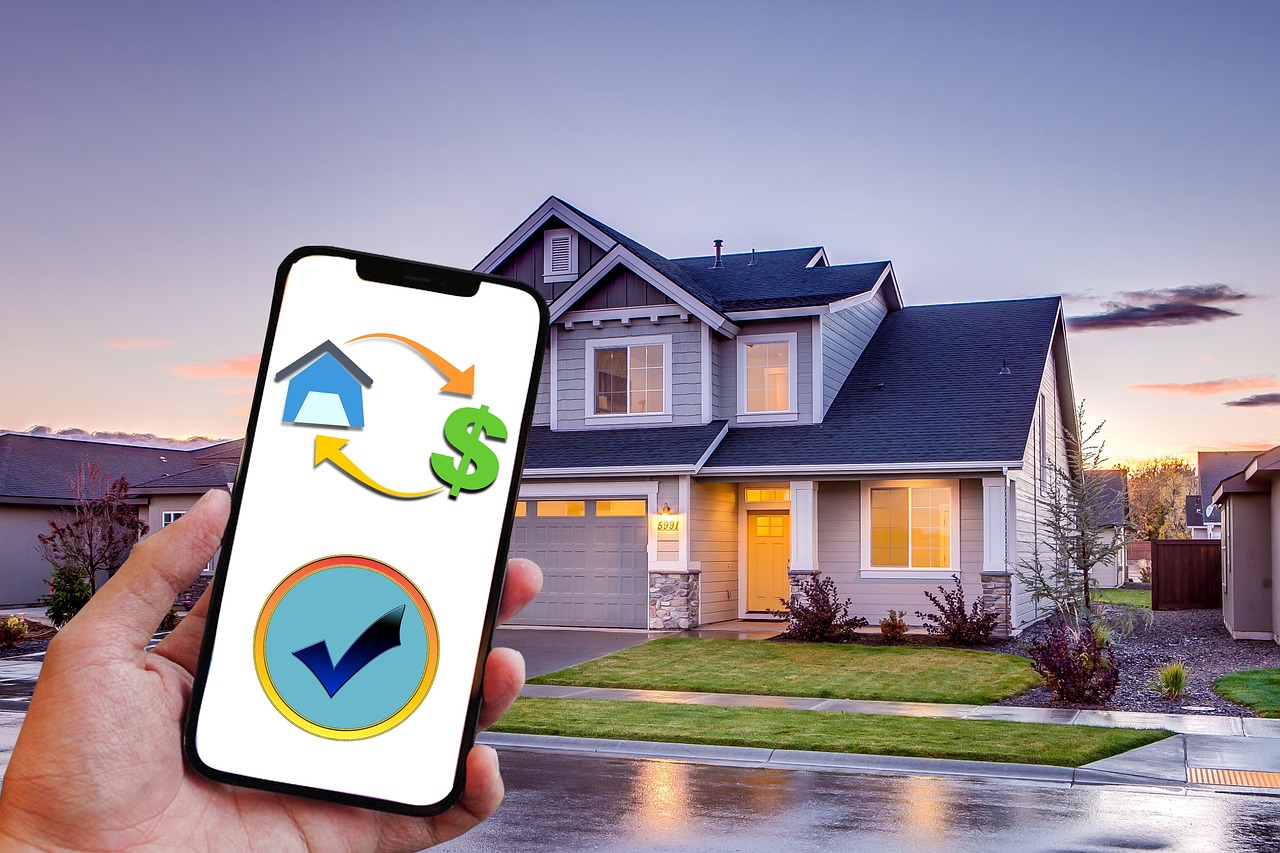
Setting Up Alerts
In today's fast-paced digital world, staying on top of your banking transactions is more important than ever. One of the most effective ways to do this is by through your bank. These alerts can notify you of various activities, ensuring that you're always aware of what's happening with your finances. Imagine receiving a message every time a transaction occurs—it's like having a personal financial assistant at your fingertips!
Most banks offer a variety of alert options, allowing you to customize what you want to be notified about. For instance, you can set alerts for:
- Large transactions exceeding a certain amount
- Low balance notifications
- Unusual login attempts
- Monthly statements
By enabling these alerts, you can catch any suspicious activity early on, potentially saving yourself from significant financial losses. It's crucial to regularly review and update your alert preferences to ensure they align with your current financial habits and needs.
To set up alerts, you typically need to log into your online banking account and navigate to the alert settings section. Here’s a general step-by-step guide:
- Log in to your online banking account.
- Find the section labeled 'Account Alerts' or 'Notifications.'
- Select the types of alerts you wish to receive.
- Choose your preferred method of notification (email, SMS, or app notifications).
- Save your settings and make sure to test them if possible.
Keep in mind that while alerts can significantly enhance your security, they are not foolproof. It's still essential to practice other security measures, such as regularly monitoring your account statements and using strong passwords. By combining these strategies, you can create a robust defense against potential fraud.
Q: How quickly will I receive alerts after setting them up?
A: Most banks send alerts in real-time, so you should receive notifications almost immediately after the specified activity occurs.
Q: Can I customize the alert types I receive?
A: Yes, most banks allow you to choose from a variety of alert types, so you can tailor them to your needs.
Q: Are there any fees associated with setting up alerts?
A: Typically, setting up alerts is a free service offered by banks, but it's always a good idea to check with your specific bank for any potential charges.
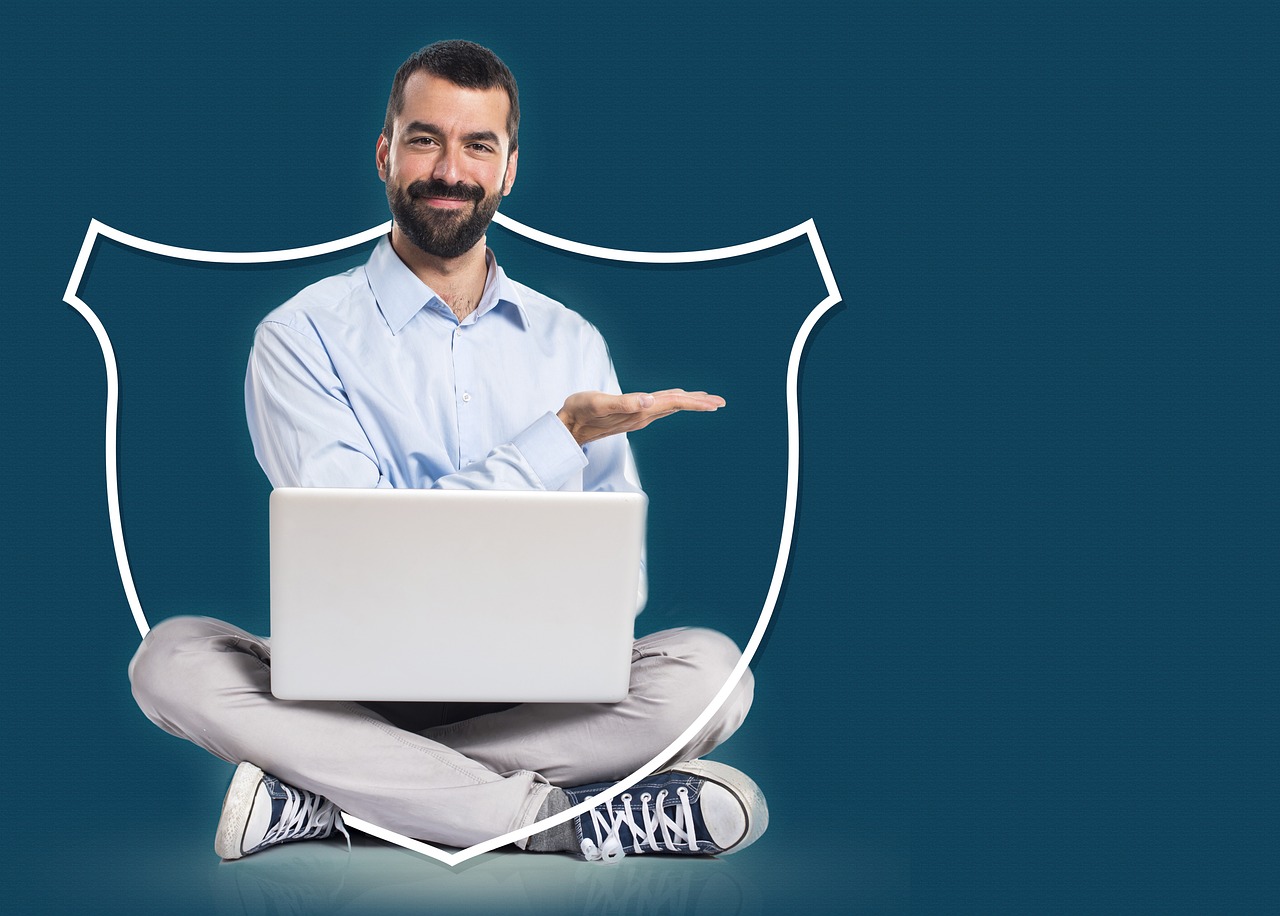
What to Do If You Suspect Fraud
Discovering that you might be a victim of fraud can be a shocking experience. It's crucial to act quickly to protect your financial information and minimize any potential damage. First and foremost, stay calm. Panicking won't help the situation, and a clear mind will allow you to take the right steps. Here’s what you should do:
Begin by reviewing your recent transactions carefully. Look for any unauthorized charges or withdrawals that you don’t recognize. If you spot something suspicious, make a note of it. This information will be vital when you report the fraud. In addition, ensure that you check all accounts, not just your primary banking account. Fraud can occur across multiple platforms, so being thorough is key.
Once you’ve identified fraudulent activity, it’s time to contact your bank or financial institution immediately. Most banks have dedicated fraud departments that can assist you. When you call, be prepared to provide them with details of the suspicious transactions, including dates, amounts, and any other relevant information. They may freeze your account to prevent further unauthorized access.
In addition to contacting your bank, it’s wise to file a report with your local authorities. This step is essential, especially if significant amounts of money are involved. Having an official report can help in the investigation and may be necessary for resolving disputes with your bank. You can typically file a report online or visit your local police department.
Another important measure is to monitor your credit reports. You are entitled to one free credit report each year from each of the three major credit bureaus: Equifax, Experian, and TransUnion. Review these reports carefully for any unfamiliar accounts or inquiries. If you notice anything suspicious, you can place a fraud alert on your credit file, making it harder for identity thieves to open accounts in your name.
Lastly, consider changing your passwords and enabling two-factor authentication (2FA) on your accounts if you haven’t done so already. This will provide an additional layer of security and help protect your accounts from future unauthorized access. Remember, it’s not just about reacting to fraud; it’s also about preventing it in the future.
- Stay calm and review your transactions.
- Contact your bank immediately.
- File a report with local authorities.
- Monitor your credit reports.
- Change your passwords and enable 2FA.
By taking these steps, you can mitigate the damage caused by fraud and protect your banking information moving forward. Always remember, being proactive is your best defense against potential threats.
Q: What should I do if I see a charge I don’t recognize?
A: Contact your bank immediately to report the charge. They will guide you through the process of disputing it.
Q: How can I prevent fraud in the future?
A: Use strong, unique passwords, enable two-factor authentication, and regularly monitor your accounts for suspicious activity.
Q: Is it necessary to report fraud to the police?
A: Yes, filing a report can help in the investigation and is often required by your bank for resolving disputes.
Q: How often should I check my credit report?
A: You should check your credit report at least once a year, but more often if you suspect fraud.

Educating Yourself on Cybersecurity
In today’s fast-paced digital world, staying informed about cybersecurity is not just a luxury; it’s a necessity. With cyber threats evolving at lightning speed, understanding the landscape is crucial for anyone who engages in online banking or other financial activities. So, how can you keep your knowledge up to date and ensure your banking information remains secure? Let’s explore some effective ways to educate yourself on this vital topic.
One of the best approaches is to take advantage of online courses and webinars. These resources offer a wealth of information, often presented by industry experts who can break down complex concepts into digestible content. For instance, platforms like Coursera, Udemy, and LinkedIn Learning provide courses specifically focused on cybersecurity fundamentals, phishing awareness, and data protection strategies. You can learn at your own pace, making it easier to fit into your busy schedule.
Additionally, many organizations and universities offer free webinars that cover current trends and emerging threats in cybersecurity. Participating in these sessions not only enhances your knowledge but also allows you to ask questions and interact with professionals in the field. Imagine sitting in a virtual room filled with like-minded individuals, all eager to learn and share their experiences. It’s a fantastic way to build your understanding and network with others who are equally passionate about cybersecurity.
Moreover, keeping up with the latest news and developments in cybersecurity is essential. Websites like CNET Security and Krebs on Security provide timely articles and reports on recent breaches, new malware, and evolving tactics used by cybercriminals. Subscribing to newsletters from these sites can help you stay informed without having to search for information actively.
Another effective way to bolster your cybersecurity knowledge is by joining online forums and communities. Platforms like Reddit and specialized cybersecurity forums allow you to engage in discussions, ask questions, and share insights with others. These communities can be incredibly supportive, providing a space to learn from real-life experiences and expert advice. You’ll often find that people are willing to share their stories, which can serve as valuable lessons in avoiding pitfalls.
Lastly, don't underestimate the power of self-study. There are numerous books, blogs, and podcasts dedicated to cybersecurity topics. For example, books like "The Art of Deception" by Kevin Mitnick provide fascinating insights into social engineering, while podcasts like "CyberWire" offer daily news summaries and expert interviews. By integrating these resources into your daily routine, you can continuously build your knowledge base and stay ahead of potential threats.
In summary, educating yourself on cybersecurity is an ongoing journey. By leveraging online courses, webinars, news sites, forums, and self-study materials, you can enhance your understanding and protect your banking information. Remember, knowledge is power, and in the realm of cybersecurity, it could be the difference between security and vulnerability.
- What are the best online resources for learning about cybersecurity?
Some great resources include Coursera, Udemy, LinkedIn Learning, and various cybersecurity blogs and news sites.
- How often should I update my cybersecurity knowledge?
It's recommended to stay updated regularly, ideally by dedicating time weekly or monthly to read articles, take courses, or participate in webinars.
- Are there any free resources available for learning cybersecurity?
Yes, many organizations offer free webinars, tutorials, and articles that can help you learn about cybersecurity without any cost.
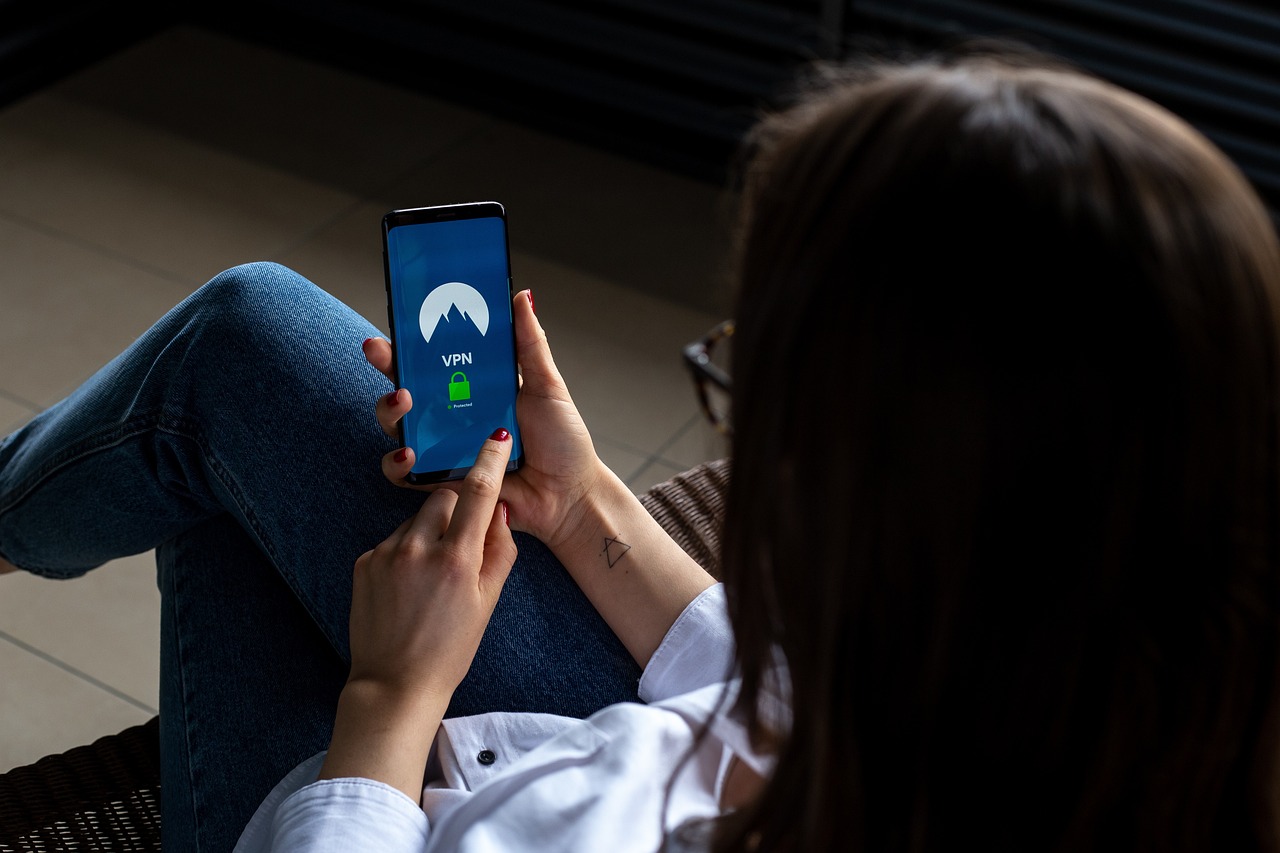
Online Courses and Webinars
In today's fast-paced digital world, staying informed about cybersecurity is not just a good idea; it's essential. have emerged as invaluable resources for anyone looking to enhance their understanding of online safety, especially when it comes to protecting banking information. These platforms offer a wealth of knowledge from industry experts, covering various topics from the basics of online security to advanced threat detection techniques.
One of the best aspects of online courses is their accessibility. You can learn at your own pace, fitting your education around your busy schedule. Whether you're a beginner or someone with a bit more experience, there's likely a course tailored just for you. For example, platforms like Coursera, Udemy, and edX provide a range of courses that cover everything from password management to understanding the latest in cybersecurity technologies.
Moreover, many webinars are hosted by professionals who are currently working in the field. This means you're not just getting theoretical knowledge; you're learning from real-world experiences. These sessions often include interactive Q&A segments, allowing participants to ask questions and clarify doubts in real time. Imagine being able to ask a cybersecurity expert about the latest phishing scams or how to better secure your devices!
To give you an idea of what you might find in these courses, here's a brief overview of common topics covered:
- Understanding different types of cyber threats
- Best practices for password management
- How to recognize phishing attempts
- Using two-factor authentication effectively
- Keeping your devices secure from malware
In addition to structured courses, don't overlook the value of free resources available online. Many organizations provide free webinars and tutorials that can be just as informative as paid courses. Websites like the Cybersecurity & Infrastructure Security Agency (CISA) frequently offer free training sessions that can help you stay updated on the latest threats and protective measures.
As you consider enrolling in online courses or attending webinars, remember that education is a continuous journey. The more you learn, the better equipped you'll be to navigate the complex landscape of online banking safely. So, take that first step today—your financial security is worth the investment!
- What are the benefits of taking online courses on cybersecurity? Online courses provide flexible learning, access to expert knowledge, and the ability to stay updated on the latest threats and best practices.
- Are there free resources available for learning about cybersecurity? Yes, many organizations offer free webinars, tutorials, and courses to help individuals learn about online safety.
- How can I choose the right online course for my needs? Consider your current knowledge level, specific interests in cybersecurity, and the course's reviews and ratings before enrolling.
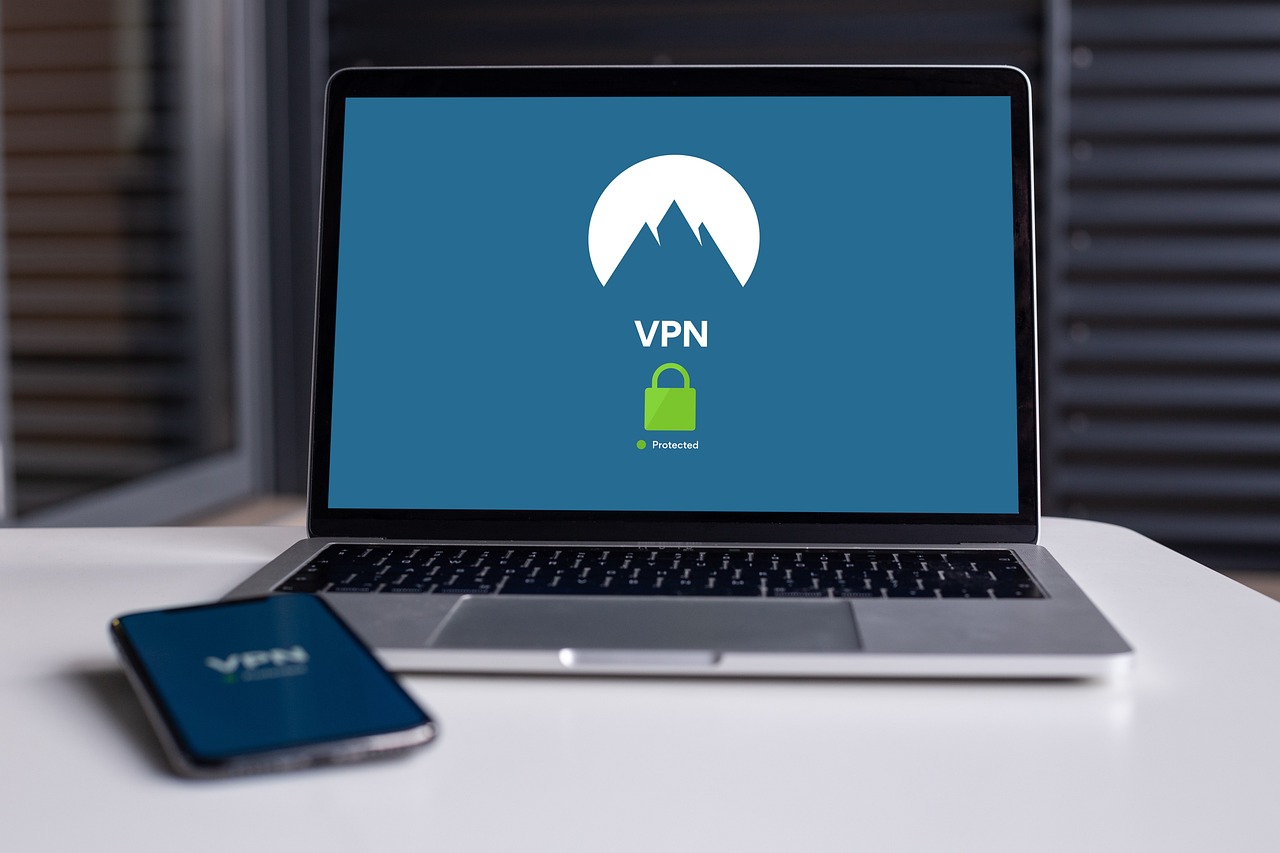
Staying Updated on Threats
In the fast-paced world of online banking, staying updated on cyber threats is not just a good practice; it’s a necessity. Cybercriminals are constantly evolving their tactics, making it crucial for individuals to remain vigilant and informed. Think of it this way: if you’re not keeping an eye on the horizon, you might miss the storm brewing. By understanding the latest threats, you can better protect your sensitive banking information and take proactive measures to safeguard your finances.
One effective way to stay informed is by regularly following reputable cybersecurity news sources and blogs. These platforms often provide insights into emerging threats, recent attacks, and best practices for online security. Some notable resources include:
- Krebs on Security: A blog by journalist Brian Krebs that covers various cybersecurity topics.
- The Hacker News: A website that provides updates on the latest cyber threats and security news.
- CNET Security: Offers articles and tips on how to protect yourself online.
Additionally, subscribing to newsletters from cybersecurity firms can help you receive timely updates directly to your inbox. Many of these companies offer free resources and reports that highlight current trends in cyber threats, allowing you to stay one step ahead of potential risks.
Moreover, participating in online forums and communities focused on cybersecurity can be incredibly beneficial. Engaging with others who share your interest in online safety can provide valuable insights and tips on how to enhance your security measures. These platforms often discuss real-life experiences, which can serve as cautionary tales or learning opportunities.
Finally, consider taking part in webinars and online courses focused on cybersecurity. These educational resources not only keep you informed but also equip you with practical skills to defend against cyber threats. Whether you’re a beginner or have some knowledge, there’s always something new to learn in this ever-evolving field.
In summary, staying updated on threats is a continuous process that requires effort and dedication. By leveraging various resources, engaging with communities, and participating in educational opportunities, you can significantly enhance your understanding of the cybersecurity landscape. Remember, knowledge is power, especially when it comes to protecting your banking information online.
Q1: Why is it important to stay updated on cybersecurity threats?
A1: Staying updated helps you recognize new threats and vulnerabilities, allowing you to take proactive measures to protect your banking information and personal data.
Q2: What are some reliable sources for cybersecurity news?
A2: Reputable sources include cybersecurity blogs like Krebs on Security, news sites like The Hacker News, and newsletters from cybersecurity firms.
Q3: How can I educate myself about cybersecurity?
A3: You can participate in online courses, webinars, and read articles or books dedicated to cybersecurity to enhance your knowledge and skills.
Q4: Are there online communities where I can discuss cybersecurity?
A4: Yes, there are various online forums and communities, such as Reddit's r/cybersecurity, where you can engage with others interested in online safety.
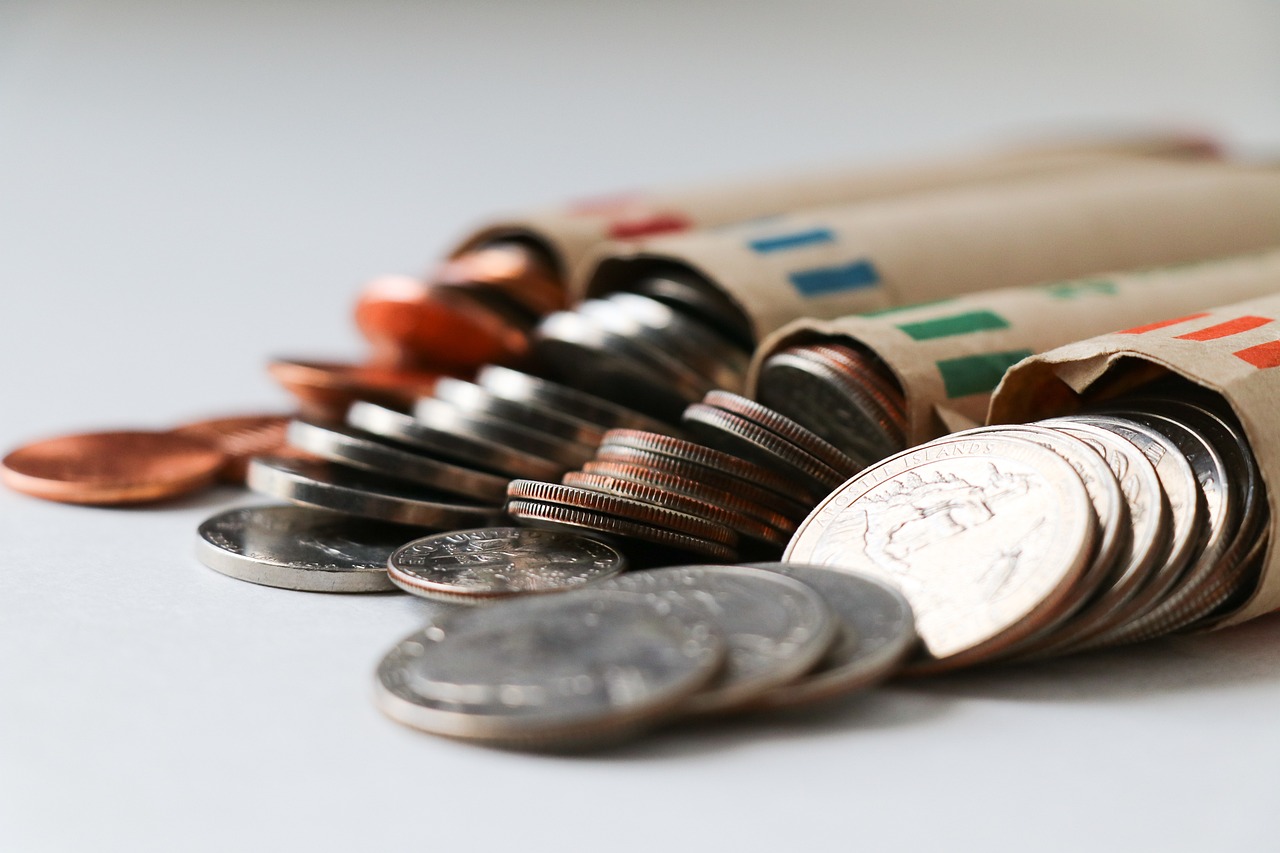
Conclusion: Staying Vigilant
In the ever-evolving landscape of online banking, staying vigilant is not just a recommendation; it's a necessity. With cyber threats lurking around every digital corner, your financial security hinges on your proactive approach to safeguarding your banking information. Remember, the strategies we've discussed are not merely tips but essential practices that can make a significant difference in your online safety. From understanding the risks associated with online banking to implementing strong passwords and two-factor authentication, each step you take is a fortification against potential breaches.
Moreover, the importance of regularly monitoring your accounts cannot be overstated. By keeping a close eye on your transactions and setting up alerts, you can quickly detect any suspicious activities and act before any damage is done. Just like a vigilant guard at a bank, your awareness acts as the first line of defense against fraud. Education plays a crucial role in this process as well. By continuously updating your knowledge about cybersecurity, you equip yourself with the tools to navigate the digital world more safely.
In conclusion, protecting your banking information is a continuous journey that requires dedication and awareness. Embrace these strategies, make them a part of your daily routine, and always be on the lookout for new threats. Your financial well-being is worth the effort, so don’t wait for a breach to take action. Stay informed, stay secure, and remember: a little vigilance goes a long way in the digital realm.
- What is the best way to create a strong password?
A strong password should be at least 12 characters long, include a mix of uppercase and lowercase letters, numbers, and special characters. Avoid using easily guessable information like birthdays or common words. - How can I recognize a phishing email?
Look for signs such as poor grammar, unfamiliar sender addresses, and urgent language that pressures you to act quickly. Always verify the source before clicking on any links. - Is two-factor authentication necessary?
Yes, two-factor authentication adds an important layer of security that helps protect your accounts from unauthorized access, even if your password is compromised. - What should I do if I suspect fraud in my account?
Immediately contact your bank to report the suspicious activity. They can help you secure your account and investigate the issue further. - How often should I update my software?
Regularly check for software updates at least once a month, or enable automatic updates whenever possible to ensure you have the latest security patches.
Frequently Asked Questions
- What are the common risks associated with online banking?
Online banking comes with several risks, including phishing, where scammers trick you into giving away sensitive information, malware, which can infect your device and steal data, and data breaches, where hackers gain unauthorized access to your financial details. Being aware of these threats is the first step in protecting your information.
- How can I create a strong password for my banking account?
To create a strong password, use a mix of uppercase and lowercase letters, numbers, and special characters. Avoid using easily guessable information like birthdays or names. It's also a good idea to use a password manager to keep track of your passwords securely.
- What is two-factor authentication (2FA) and why is it important?
Two-factor authentication (2FA) adds an extra layer of security by requiring a second form of verification in addition to your password. This could be a code sent to your phone or an app. Even if someone steals your password, they can't access your account without this second factor, making it crucial for protecting your banking information.
- How do I recognize phishing scams?
Phishing scams often come in the form of emails or messages that appear to be from legitimate sources. Look for generic greetings, spelling errors, and urgent requests for personal information. Always double-check the sender's email address and never click on suspicious links.
- What steps can I take to secure my devices?
To secure your devices, ensure you have up-to-date software and operating systems. Use reputable antivirus software to protect against malware, and avoid downloading apps from untrusted sources. Regularly review your device's security settings to keep your banking information safe.
- How can I monitor my banking accounts effectively?
Regular monitoring of your accounts is vital. Set up transaction alerts through your bank to receive notifications for any activity. Check your statements frequently for any unauthorized transactions, and report suspicious activity immediately.
- What should I do if I suspect fraud on my account?
If you suspect fraud, immediately contact your bank to report the issue. Change your passwords and enable two-factor authentication if you haven't already. Keeping a close eye on your account activity will help minimize potential damage.
- How can I educate myself about cybersecurity?
Staying informed about cybersecurity is key. Consider enrolling in online courses or attending webinars focused on online security. Follow reputable cybersecurity blogs and news sites to keep up with the latest threats and protective measures.



















